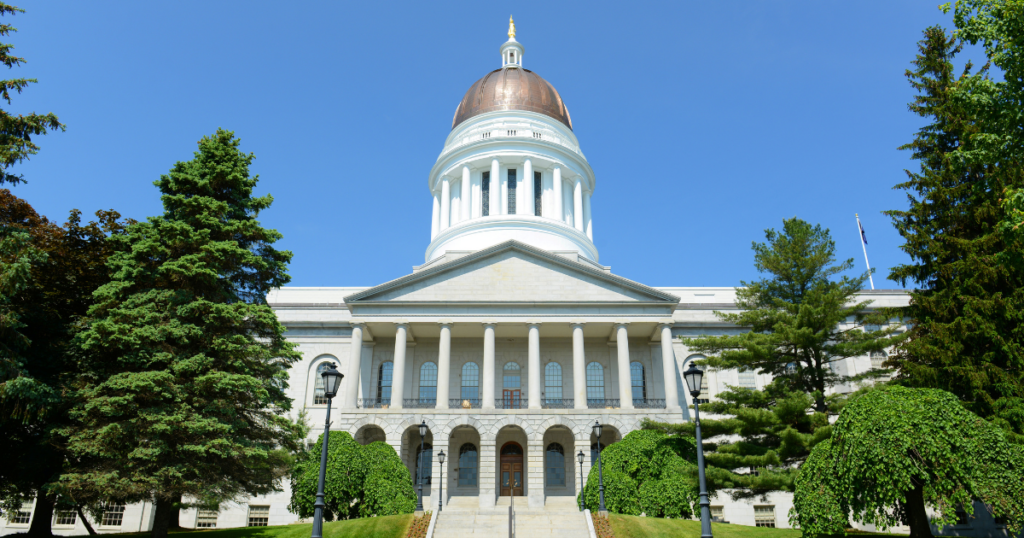At a glance:
- The state’s Revenue Forecasting Commission made only minor adjustments to future revenue estimates, resulting in a net increase of just over $1 million, while lawmakers face a projected $206 million shortfall to meet existing obligations
- The legislature has $125 million in surplus but faces over $300 million in remaining obligations, including increased MaineCare costs, funding for community college and public universities, and cost-of-living adjustments for direct care workers
- To close the budget gap and prepare for future economic risks, lawmakers should increase revenue by raising taxes on Mainers with high income, such as through capital gains taxes and higher income tax rates
On Monday, the state’s Revenue Forecasting Commission met to finalize their projections for state revenues for the next few years, which lawmakers will use as they look to pass the second part of the biennial budget. Overall, the Commission made only minor adjustments to the forecast, which resulted in a slight increase in general fund revenue through fiscal year 2027. However, not only do state revenues remain below the levels needed to fully fund statutory commitments, but this forecast comes at a time of great economic uncertainty which could reduce revenues further in the future, while imposing additional costs on state government.
The Revenue Forecasting Commission projected general fund revenue would be $24 million higher in the current fiscal year (2025), $1 million higher in fiscal year 2026, and $24 million lower in fiscal year 2027. Taken together, that’s an increase in general fund revenue of just over $1 million over the budgeting period.
When the legislature passed LD 609, the first part of the biennial budget, it left $128 million unspent. Since then, it has also passed LD 1101, which allocates a little under $4 million from the General Fund through fiscal year 2027 for the new public defender system. As a result, the total amount of general fund surplus the Appropriations Committee has to work with is $125 million.
On the other side of the ledger, the legislature has two major statutory commitments left to fully fund: additional enrollment and spending in the MaineCare program requires an extra $123 million of appropriations in fiscal year 2027; and meeting the legal requirement to apply cost-of-living adjustments to MaineCare reimbursement rates for some programs (including ensuring that direct care workers continue to earn at least 125% of the minimum wage) will cost an additional $132 million. Making the free community college program permanent will cost $25 million. To ensure Maine’s public universities and college funding keeps up with inflation and to account for the new Paid Family and Medical Leave premium for their employees will cost another $51 million. That’s a total of $331 million in new expenditures that are needed.
After accounting for the $125 million in existing revenue, the legislature would still have to find an extra $206 million over the biennium to fund these basic needs. The Governor’s budget proposal does contain several revenue options the committee has yet to consider. For example, phasing out the pension deduction for high earners would recapture $43 million from Mainers with higher incomes, which would reduce the shortfall to $163 million.
To close this gap and to have new funding for all the other unmet needs in Maine, legislators must raise more revenue by asking wealthy Mainers to pay more. They have several options to do so that are currently in play, including higher rates of taxes on capital gains (LD 1047) and increasing the top rate of income tax for high earners (LD 1089).
Bolstering Maine’s revenue-raising capacity will not only help meet today’s need, but will position us to better weather the potential economic storm coming from actions at the federal level. The full impact of President Trump’s huge increase in tariffs has yet to be felt, and could lead to layoffs and reduced consumer spending. Congress is planning cuts to MaineCare and SNAP which could shift hundreds of millions of dollars of costs onto state budgets. And the illegal withdrawal of Congressionally-approved funding to state agencies will leave even more funding gaps to fill.
Despite the relatively calm revenue forecast this week, lawmakers must not lose sight of the bigger budget picture and problems on the horizon. Both to meet needs now and to position us well for the future, Maine Center for Economic Policy urges them to raise taxes on the wealthy.


